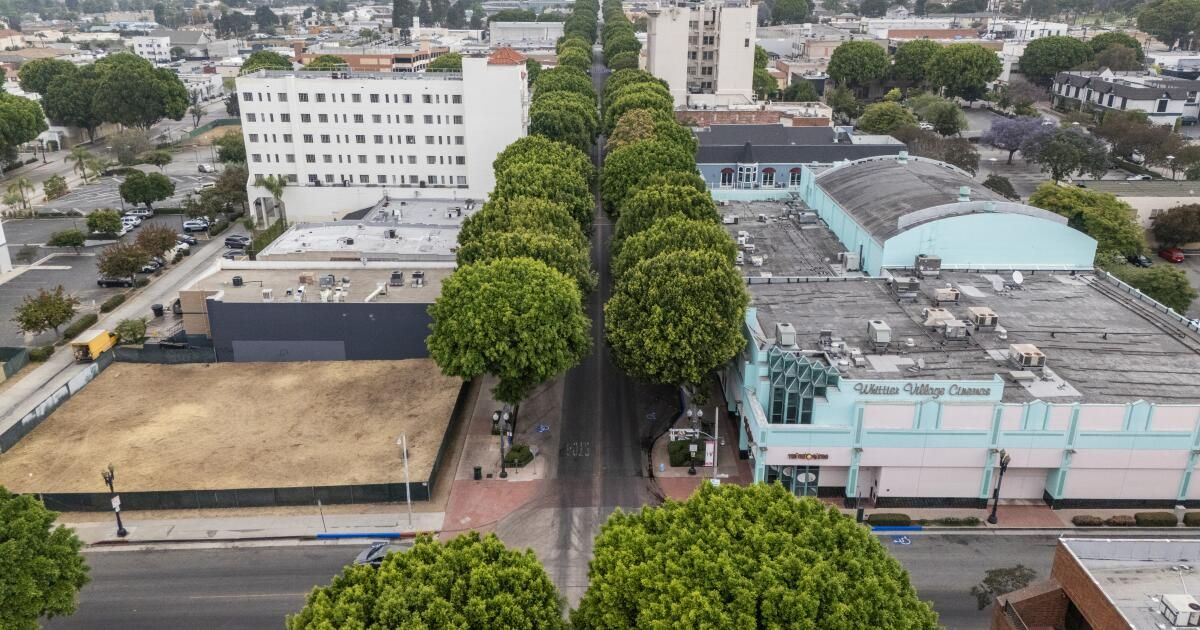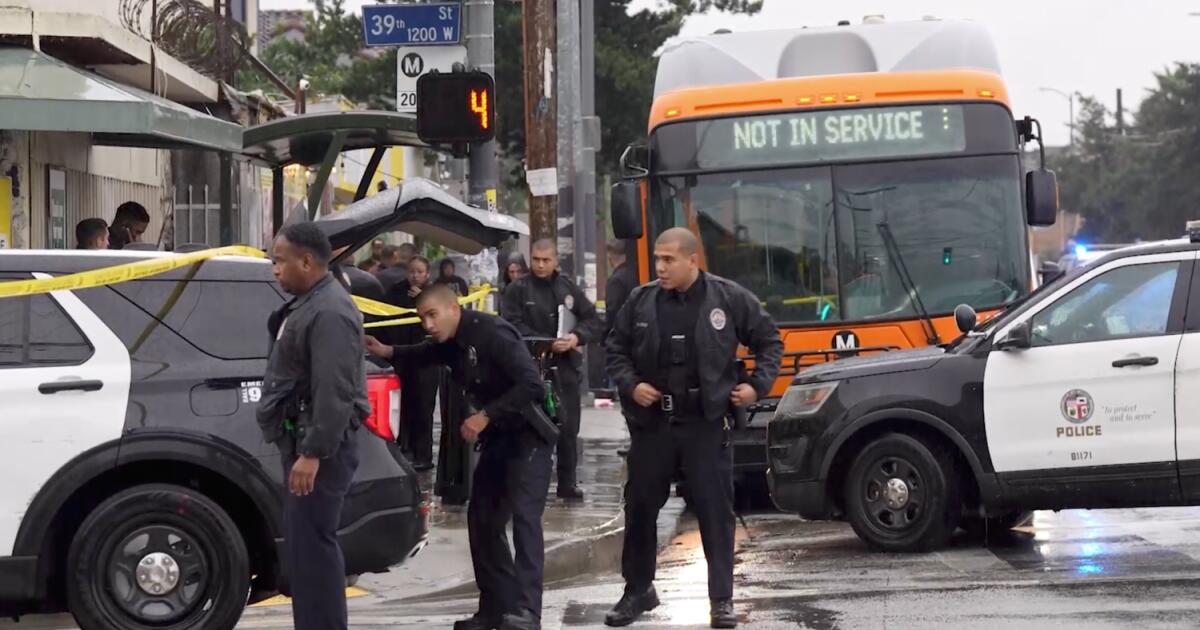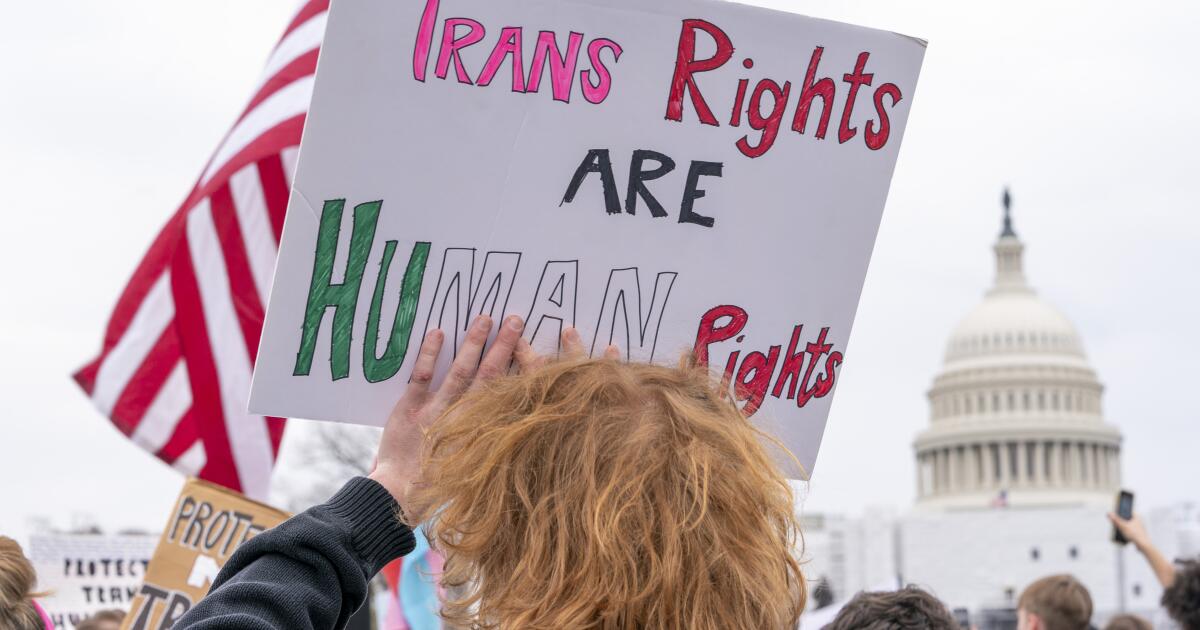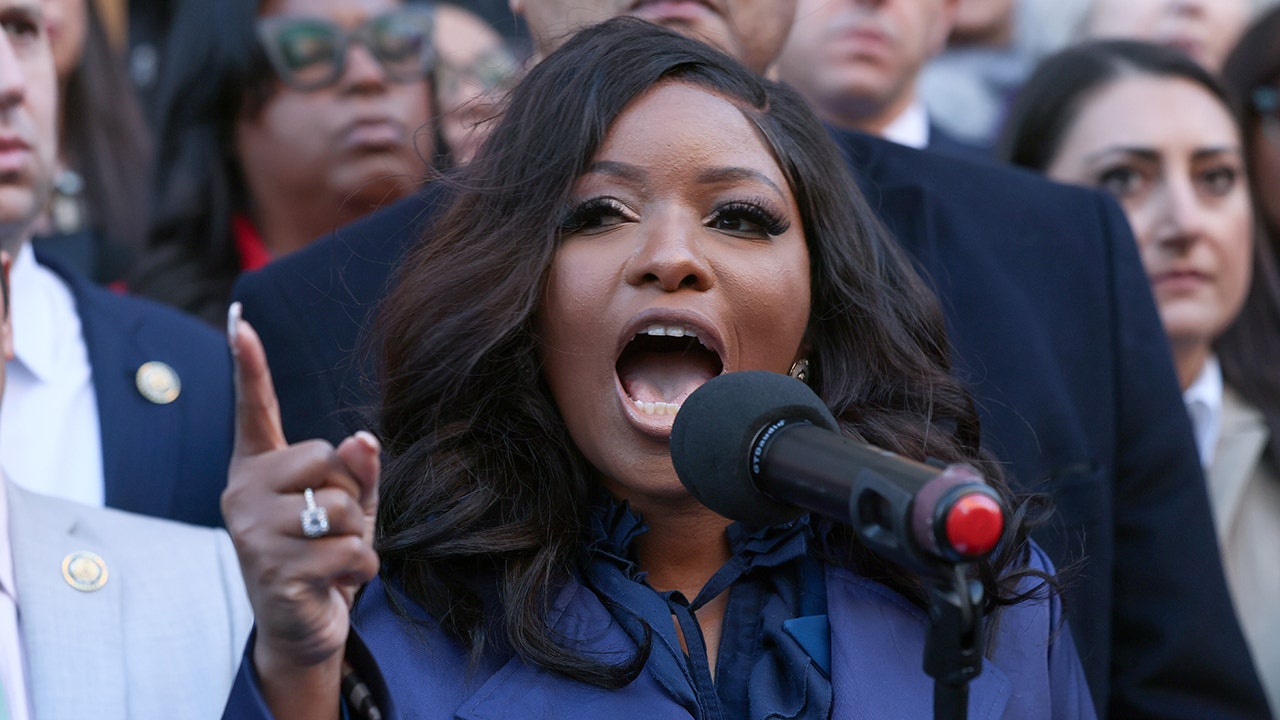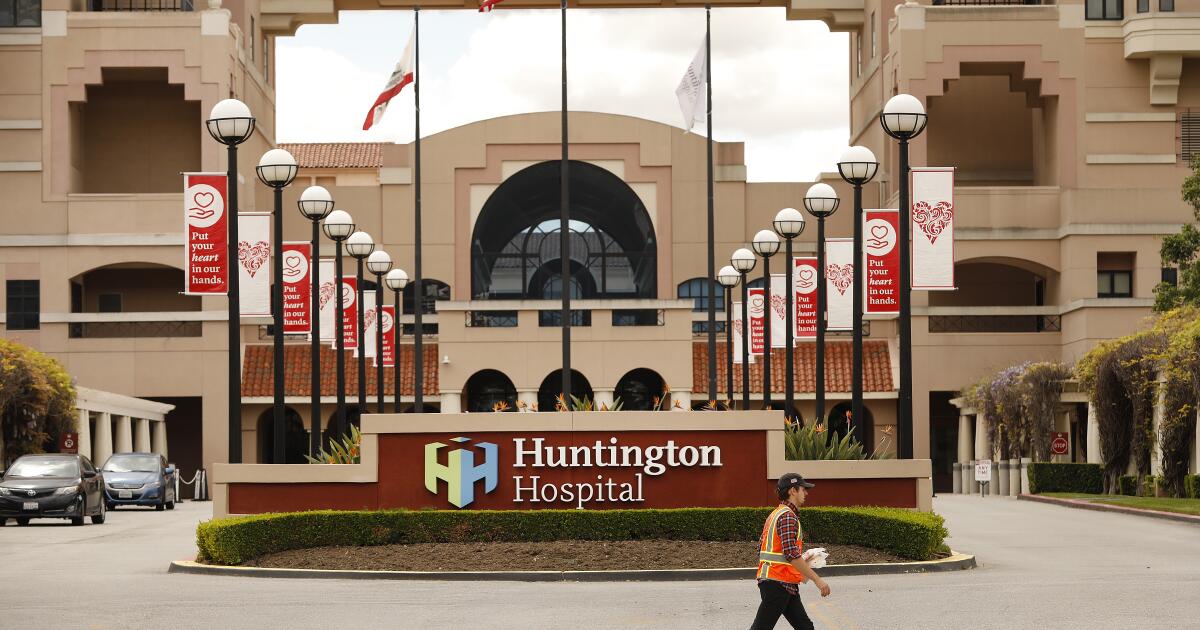Whittier will move forward with cutting down 83 ficus trees as part of a redesign of its shopping center despite widespread opposition to the plan.
On Tuesday night, City Council members voted 3-1 to proceed with a $20 million redevelopment project in Uptown Whittier that requires the removal of all ficus trees in the three-block project area.
The decision came after months of public outcry over the fate of the trees following the mid-December approval of the Greenleaf Promenade.
The project is touted as a means to make the area more pedestrian-friendly and breathe financial life into the area, but some residents believe that sacrificing the towering trees, with their cooling canopy and majestic appearance, is not a reasonable trade-off.
City leaders said they ultimately saw promise in the renovation, while noting potential health and safety concerns the trees posed.
“I'm looking forward to revitalizing Uptown with new trees, new architecture, new lighting, new pavement, something I think we can all be proud of,” Councilman Fernando Dutra said before voting in favor of the project.
Mary Ann Pacheco, a recent addition to the council, cast the only opposition vote. She said the plan suffered from poor optics, which could potentially be resolved by a review of the planning process.
“The perception in the city is that it was done wrong and that it was done for the wrong reasons,” he said. “I'm not going to say it was, but until that real problem is solved, trees will continue to be, quote, the problem.”
The tree debate has divided the community, pitting some business owners against residents…and each other. There have even been calls to boycott companies seen as condoning its removal.
Some see the trees as synonymous with the character of the quiet community located in eastern Los Angeles County and praise them for providing shade and gobbling up greenhouse gases in a warming world.
Others blame non-native trees for lifting sidewalks and clogging sewer lines with their roots, or are willing to sacrifice trees to begin construction on a project they believe will bring economic vitality.
More than 40 speakers passionately shared their perspective during public comments at the recent meeting, and almost all opposed tree cutting.
Helen Rahder, executive director of the Whittier Conservancy, called the plan “absurd” during her public comments.
“It's in your hands and you have the ability to do it: revise the plan to include the trees,” he said. “We have to go back to the drawing board on this. “The community is not going to accept this.”
Greenleaf Avenue in Whittier on June 5, 2024. Some blame the trees for plumbing and sidewalk problems, while others enjoy the shade.
(Myung J. Chun / Los Angeles Times)
Tensions flared several times during the meeting, which lasted approximately four hours. At times, audience members hurled insults at officials, and twice Mayor Pro Tem Cathy Warner called breaks amid the din.
Someone yelled when the meeting ended: “You guys stink!”
Several council members expressed disappointment in the hostile tone of the debate (both inside and outside City Hall) during their remarks.
At the meeting, council members approved modifications to the project, including replacing trees scheduled for removal with larger trees than previously planned, as well as adding more umbrella structures to cover the sidewalk. The changes appeared to respond to concerns about possible loss of canopy and shade, and could boost carbon sequestration.
According to a consultant hired by the city, there would be a significant drop in carbon sequestration the first year after the current canopy was replaced, with the level expected to break even in 24 years under the initial plan.
“In this scenario, the breakeven year would come earlier with the larger trees,” said Alan Ashimine of Michael Baker International, which provided environmental advice. “A larger tree planted would mature more quickly and sequester more carbon earlier in the life of the project.”
City officials also explored options for gradually implementing the project and answered more than 50 questions raised in public comments, including about legal liability posed by tree hazards, environmental documentation and historic streetlights.
“We will not give up!” resident Conny McCormack said in a text message the day after the meeting. McCormack, who was among those leading opposition to the tree cutting, suggested a lawsuit could be in the works.
Since residents learned of the plan to cut down the trees, they have flocked to meetings, held rallies, and circulated a petition to protest the cutting down of the trees all at once to make way for the Greenleaf Promenade.
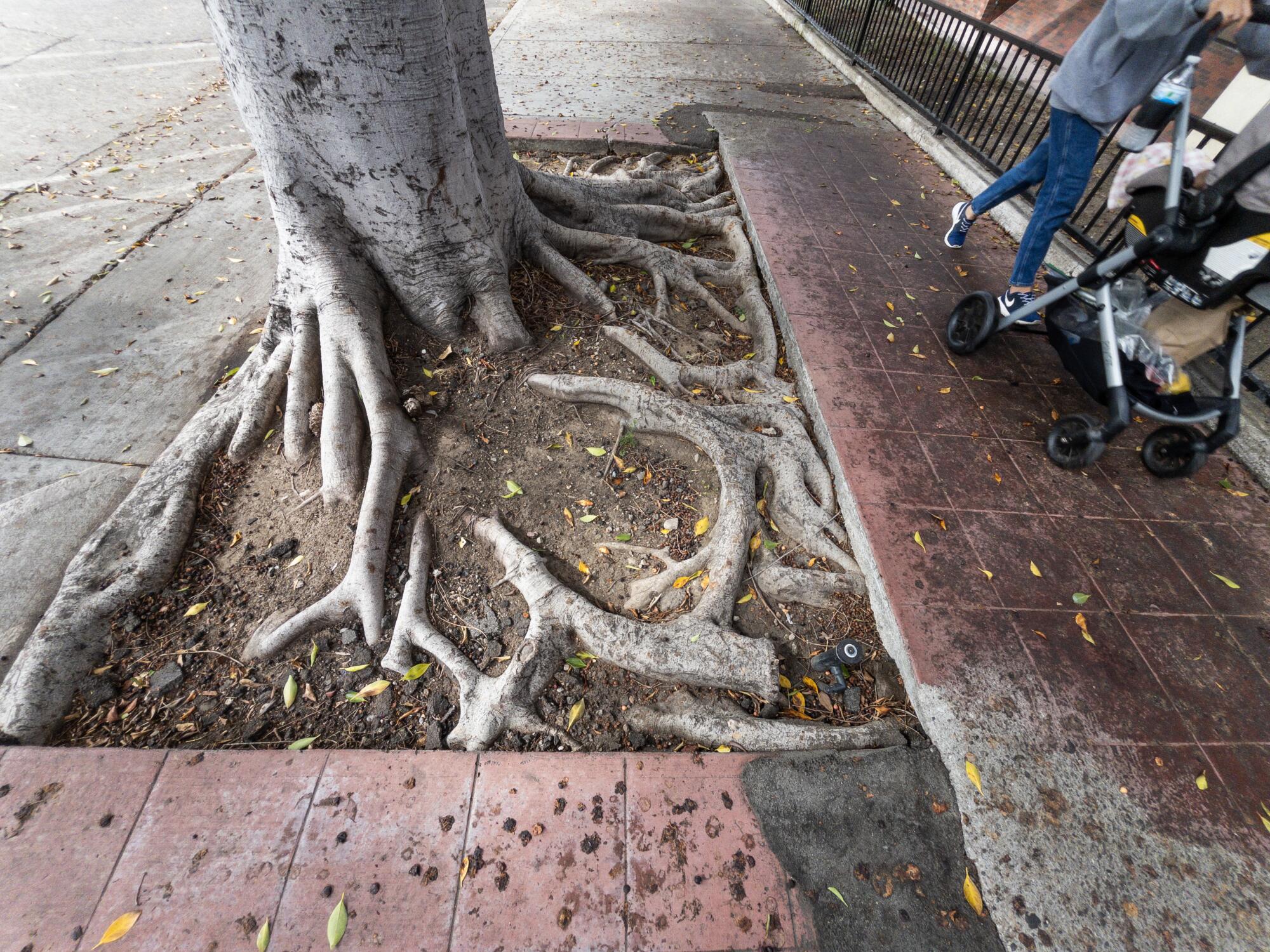
Ficus roots can lift sidewalks and infiltrate sewers, leading some residents to support its removal in Uptown Whittier.
(Myung J. Chun / Los Angeles Times)
City leaders paid attention. The recent tree-focused “study session” followed two more after the protest.
According to city officials, construction elements, such as the grading required, make it impossible to save any of the ficus trees.
At the meeting, City Manager Brian Saeki said the city couldn't remove every other tree because of tree buffer zones, or areas around trees where “no construction can take place… without endangering the health of those trees.
Some other types of trees lining the street may be salvaged, officials said.
One point of widespread agreement is that Uptown Whittier, considered the heart of the city, could use some love. It was last updated in the 1980s, including renovations after the 1987 Whittier Narrows earthquake that severely damaged the area.
The planned promenade extends from Wardman Street to Hadley Street, along the aptly named Greenleaf Avenue, and includes expanded sidewalks, outdoor dining, gathering spaces, street furniture and decorative lighting.
City officials “are committed to revitalizing Uptown Whittier into a thriving, walkable and pedestrian-friendly area for generations of residents to enjoy,” Saeki said in a statement last month. To make the “long-held vision” a reality, she said, certain trees in the project area need to be removed.
“We understand the community's concerns, we appreciate the feedback we've received,” Saeki said, adding that the city will plant larger replacement trees “where possible,” in addition to adding 39,000 square feet of understory landscaping and 18,000 square feet park again. space.
A similar but smaller pilot project was approved in 2019 but was scuttled by the pandemic, according to city officials. Costing an estimated $3.8 million, the block-long Uptown Gardens differed in a way some consider crucial: They preserved clumps of ficus trees.
Over the next few years, city officials said, the project morphed and expanded, partly in response to changing preferences born of the pandemic. Greenleaf Promenade costs about five times more than the pilot project.
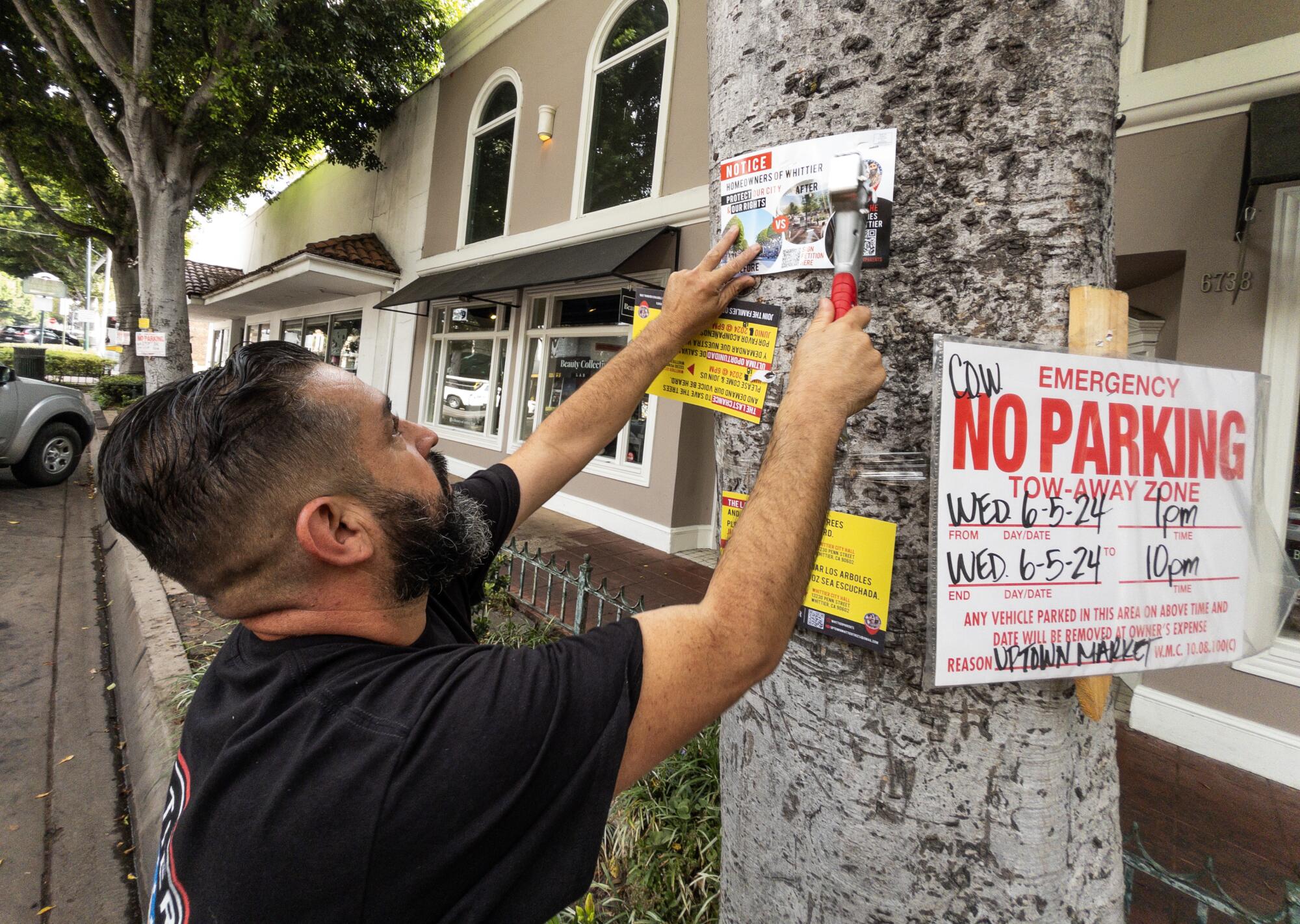
Last month, Javier García posted notices urging local homeowners to protect ficus trees on Greenleaf Avenue.
(Myung J. Chun / Los Angeles Times)
Through it all, Uptown Whittier has retained its small-town atmosphere. Greenleaf Avenue is lined with mom-and-pop shops, like Lovell's Records, which has been in business for more than 70 years, interspersed with newer establishments like La Sexy Michelada, a bar and restaurant.
Today, the controversial ficus trees (believed to date from the late 1960s) create a canopy of shade along the avenue. Some of its benefits and disadvantages are clearly shown. Step out from its spreading branches on a warm day and prepare to be lashed by the sun. But walk on the sidewalk beneath them when they drop berries and expect to step on organic soil.
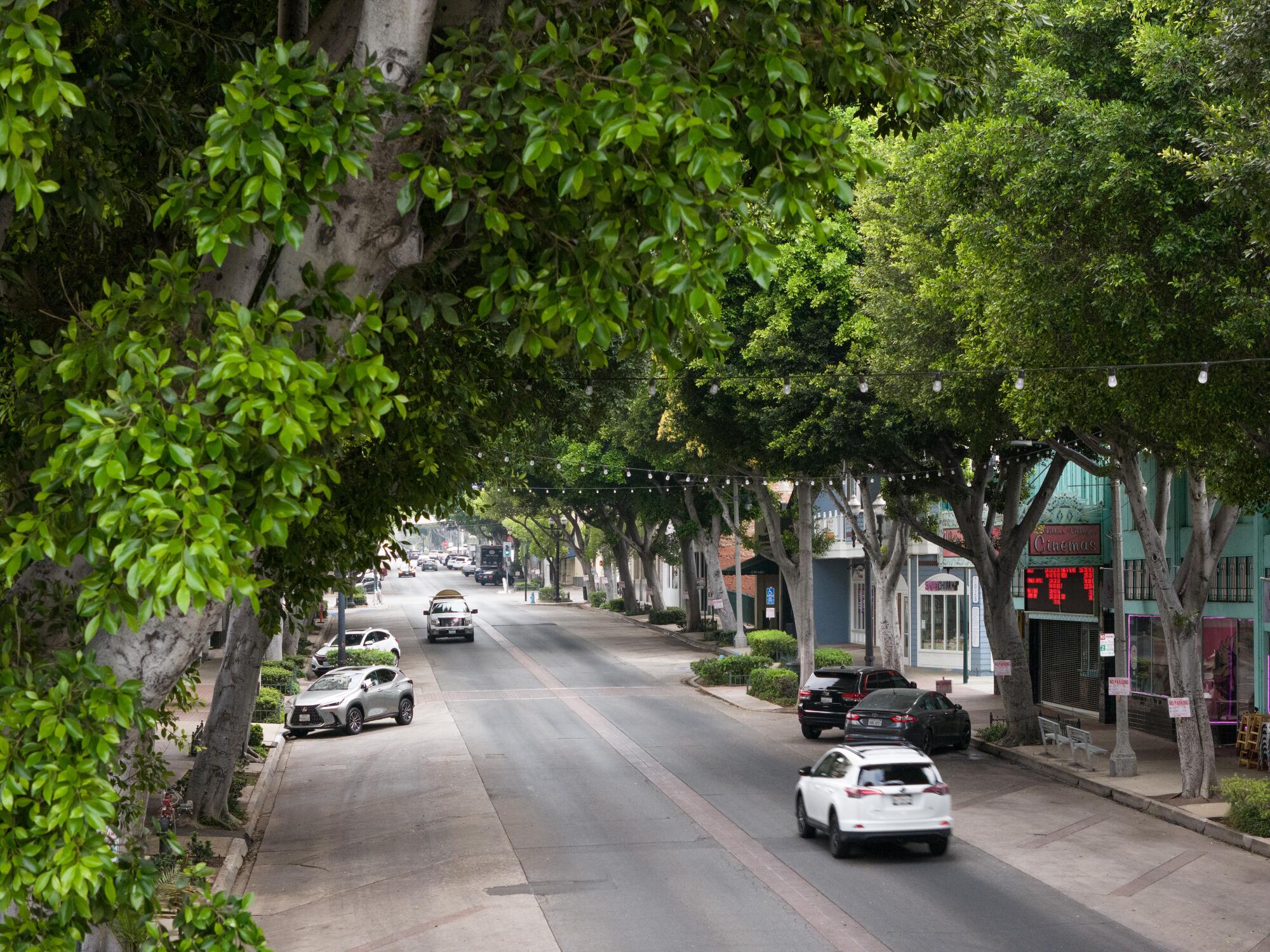
The trees causing the strife in Uptown Whittier are believed to date back to the late 1960s. Some see them as critical to the look of the town.
(Myung J. Chun / Los Angeles Times)
It's not just Whittier who struggles with the ambivalence of ficus.
Beverly Hills cut down more than 50 ficus trees as part of a sidewalk renovation project before a judge ordered the city to stop with a preliminary injunction. Following the ruling, the city opted to complete an environmental impact report for the project, which is still in process.
In 2018, Pasadena city officials held a meeting to gather community input on whether to continue planting ficus trees and how they affected Green Street. In March of last year, the volunteer group Pasadena Beautiful Foundation reported planting 30 ficus trees on the street.

